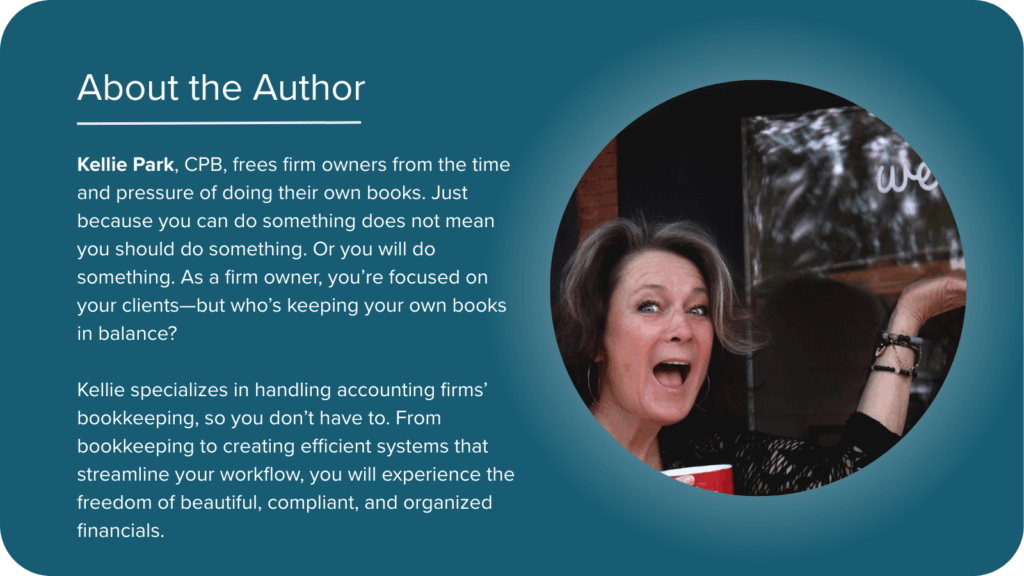How to move your team forward—even when change feels uncomfortable.
“Change is hard. Not changing will be harder.” – Kellie Parks
Change is inevitable—but that doesn’t mean it’s easy. Especially in accounting, where accuracy, consistency, and structure are core to everything you do.
Whether you’re rolling out a new software tool, shifting to cloud-based workflows, or updating internal processes, change can be met with hesitation, pushback, or even flat-out resistance.
The good news? Change resistance is normal and manageable. With the right approach, you can guide your team through transitions in a way that builds buy-in, strengthens culture, and makes change feel less like a disruption and more like progress.
Why Change Is Hard in Accounting Firms
Before addressing resistance, it helps to understand where it comes from.
In most firms, resistance isn’t about laziness or negativity—it’s about:
- Change fatigue – “Another tool? We just learned the last one.”
- Fear of failure – “What if I mess this up?”
- Loss of control – “I know how to do things my way.”
- Perceived complexity – “This feels like more work.”
- Unclear benefits – “Why are we even doing this?”
Sound familiar? These reactions are completely normal, especially in high-stakes environments like accounting and finance.
The Hidden Cost of Avoiding Change
Avoiding change may feel safer in the short term, but it comes at a cost:
- Difficulty attracting or retaining staff
- Falling behind more agile competitors
- Outdated client experience
- Slower workflows
- Team burnout from manual work
In a profession where efficiency and trust are everything, adapting your tools and processes isn’t optional—it’s essential.
6 Strategies to Reduce Resistance and Build Buy-In
Here’s how to introduce change in a way that gets your team (and clients) on board:
1. Start With the “Why”
Don’t begin with features or tasks. Begin with the problem.
- Client expectations around speed and digital access?
- Lost time chasing signatures?
- Rework due to inconsistent processes?
When your team understands the reason behind the change—and how it benefits them—they’re more likely to engage.
🡒 Example: “We’re switching to SignWell for e-signatures because it will cut document turnaround time by 80%, reduce errors, and give clients a smoother experience.”
2. Involve the Team Early
Instead of announcing a change after it’s been decided, involve your team in the decision-making process.
- Ask for feedback on current pain points
- Choose a small pilot group to test and refine the process
- Demo a few tool options and let them weigh in
When people feel heard, they feel invested—and that turns resistance into collaboration.
3. Make the Change Feel Small
Big changes feel overwhelming. Break them down into smaller, manageable steps.
- Focus on one department, one client segment, or one workflow at a time.
- Instead of “We’re moving the entire firm to cloud accounting,” say, “Let’s start with onboarding new clients using our cloud-based intake form and e-signature workflow.”
Momentum builds quickly when the first step feels doable.
4. Prioritize Tools That Are Easy to Use
One of the best ways to reduce resistance is to choose software that’s intuitive and low-friction.
SignWell is a good example: it’s simple enough for anyone to use, requires no downloads or special training, and gets results quickly. Tools like this build team confidence and show that change doesn’t have to be hard.
When people succeed with small wins (like getting a document signed in minutes vs. days), they’re more open to the next change.
5. Provide Clear Training and Support
Don’t assume people will “figure it out.” Even small tools require context and guidance.
- Create a one-page cheat sheet or SOP
- Offer a brief walkthrough (recorded or live)
- Make it easy for people to ask questions or flag issues
Training doesn’t have to be elaborate—it just has to be clear, timely, and supportive.
6. Celebrate Progress, Not Perfection
Acknowledge that change takes effort. Celebrate the small wins.
- “Our first 10 clients signed their engagement letters with SignWell—no printing, no delays.”
- “Shout-out to Lisa for helping the team navigate the new workflow.”
- “We cut monthly close time by 20% thanks to the new task system.”
Recognition reinforces the value of the change and motivates others to follow suit.
Dealing with Pushback: A Quick Guide
Not everyone will embrace change right away. That’s okay. Here’s how to respond:
| Objection | What to Say |
| “The old way worked fine.” | “True, but this way is faster and frees us up for more client-facing work.” |
| “It’s too complicated.” | “Let’s walk through it together—it’s simpler than it looks.” |
| “I don’t have time to learn something new.” | “That’s why we’re starting small. One document, one workflow.” |
| “I don’t see the point.” | “Let me show you how much time it saves after just one use.” |
The key is to validate concerns without backing away from the change. Listen, support, and reinforce the benefits.
Final Thoughts
Change doesn’t have to feel like a threat. With the right approach, it can feel like momentum.
By starting small, choosing simple tools like SignWell, and communicating clearly, you can help your team move forward—with less friction, more confidence, and better results.
Change is hard. But staying stuck is harder.
Get documents signed in minutes.
Simple, secure, affordable e-signatures
by  .
.
Get Started Today
businesses served
customer support satisfaction
documents signed
